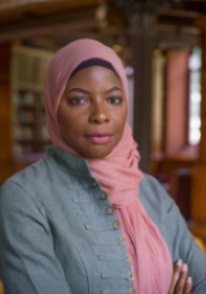Full Text
Methods and Meaning in Islamic Law: Introduction
By Intisar Rabb, with contributions by Mariam Sheibani and Najam Haider
How should we think about the most pressing questions of Islamic law and legal history today? We asked leading scholars of Islamic law and history to weigh in on the methods and meaning they notice or favor, at a time when much has changed in the field and the world since Islamic law emerged as a major field of studies in the global academy over the last century, and at a time when access to new sources, historiographical advances, and data science tools promise that more changes are yet to come.
Myriad engagements with Islamic law and its historical moorings motivate a slew of sometimes existential questions: Is Islamic law a lived tradition with varied socio-historical manifestations, or is it a set of doctrines and rules contained in normative texts that many label "orthodox"? Is Islamic law an expression of values that any modern adherent could interpret to order lives and oppose injustice, or is it the province of experts to show what Muslim jurists said and did, historically, in an unbroken chain of textual sources that reach back to the Prophet Muḥammad and Islam’s founding era? What is Islamic law and history about? How do we know? And to what end?
Consider this: When Malcolm X squared off against Joseph Schacht in a 1962 New York court room, ostensibly over whether inmates at Attica claiming to be Muslim were entitled to religious accommodations, the two were arguing about methods and meaning in Islamic law and history.[1] Years earlier, when Joseph Schacht accepted Harvard Law School Dean Erwin Griswold’s invitation to deliver the first major lecture on Islamic law at an American law school in 1947, the two were engaged in a conversation about method and meaning in Islamic law and history in the academy and in the courts.[2] And years later, when the late Columbia professor Jeanette Wakin wrote a tribute to her colleague Joseph Schacht (d. 1969) in this Program in Islamic Law’s predecessor publication, she, too was meditating on methods and meaning in Islamic law and history.[3] All asked questions about the origins, methods, and contours of Islamic law, which took off in the 1950s and 60s.[4] Throughout Schacht loomed large as he marched his way into the center of these debates by virtue of his first-in-time activities related to Islamic law as law, on the page and in the world.[5] But then we moved beyond Schacht.
Now consider this: By the early 1990s, scholarship about Islamic law had grown exponentially, as dozens of well-known scholars pursued ever more sophisticated questions about its methods and meanings. It was during this time that ‘Islamic law’ emerged and gained recognition as a discrete field of academic inquiry. This period saw entire cohorts of PhD graduates receive training by leading scholars of Islamic law and history who had joined the faculties at Harvard, Princeton, the University of Pennsylvania, and elsewhere.[6] They, their students, and scholars from around the country engaged in sustained debates tackling major historical controversies in the study of Islamic law and history.[7] Some of those debates unfolded in the pages of the Journal of Islamic Law and Society, which emerged then too, in 1994.[8] And this same decade saw the establishment of the Islamic Legal Studies Program at Harvard Law School, to which the Program in Islamic Law is heir.[9] It was against that backdrop that Stephen Humphreys published the first handbook on Islamic history in 1991 and that Bernard Weiss published an edited volume that functioned as a handbook on Islamic law a decade later in 2001.[10]
Since, with the coming of the twenty-first century, the fields of Islamic law and legal history have seen unprecedented advances in scholarly meditations on meaning and method, and in the expansion of publications of primary and secondary sources of Islamic law and history.[11] One especially notable phenomenon is the recent trend of studied reflections on Islamic legal history and historiography alongside these works, resulting in the publication of no fewer than five handbooks on Islamic law in just five years.[12]
In light of these developments, we convened a Roundtable at the Islamic Law Blog to take stock of the state of the field. We invited leading and emerging scholars of Islamic law and history to weigh in on their approach to varied questions of method and meaning in Islamic legal history:
- What have been the most significant methodological and historical developments in the field of Islamic law over the past two decades?
- How have mainstream approaches from related fields in the humanities and social sciences, ranging from European, American, or Chinese legal history, for example, to law-and-economics, anthropology, and sociology, informed the study of Islamic law?
- How have critical approaches from other fields in the humanities and social sciences, ranging from gender and feminist studies to critical race theory, informed the study of Islamic law?
- How have data science, the use of quantitative methods, and digital technologies impacted the field, or promised to shape the future of the field?
- What is your chosen approach to the historical study of Islamic law, and why?
Our Roundtable put a wide array of legal, social, and intellectual historians in conversation with one another on questions of meaning and method in Islamic law. Through it, we found insight into the once and future status of the field of Islamic legal history and historiography.


